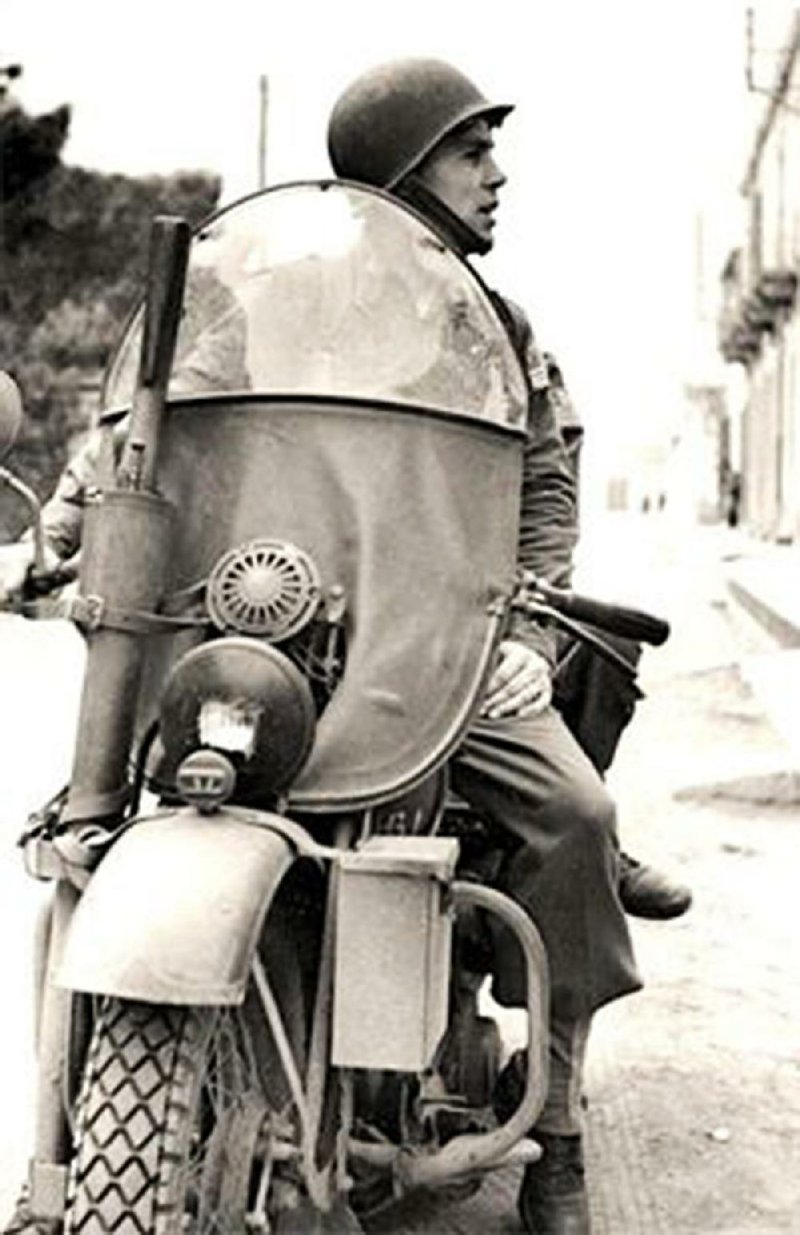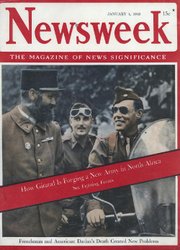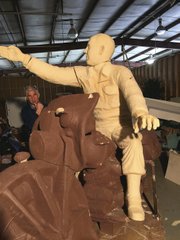Col. William Orlando Darby, known as the father of the U.S. Army Rangers, was honored with a parade in downtown Fort Smith in 1944, but he was too haunted and troubled to enjoy it.
He was a World War II combat hero who returned home before the fighting was over, while the troops he had trained and fought beside were still in the thick of battle.
"He wanted to get back to combat in Italy," said his nephew, Darby Watkins, of Mobile, Ala. "He trained his Rangers there. They fought together, and some died together. He had to make an attempt to get back with them."
The Rangers' creed was that they would leave none of their own behind, Watkins said.
Although Darby could have been appointed as a U.S. ambassador or even run for president on his wartime reputation, he chose to go back to battle.
"You could see in photographs of my uncle that he was troubled when he came home," Watkins said. "He had unfinished business."
Nine days after he returned to Lake Garda, Italy, Darby was killed by shrapnel from an exploding German shell.
This weekend, 71 years after Darby's death, officials in Fort Smith will honor him again by unveiling a statue of him atop a 1942 Harley-Davidson WLA motorcycle, which he rode while serving overseas. The unveiling is planned for 10 a.m. Saturday at Cisterna Park at Garrison and Towson avenues.
More than 30,000 are expected to attend the unveiling, said Leisa Gramlich, the executive director of the Fort Smith Museum of History. Watkins, 61, is to speak at the event, where the statue, created by Kevin Kresse of Little Rock, will be officially revealed.
Darby was born Feb. 8, 1911, in Fort Smith and graduated from Fort Smith High School in 1929. He received an appointment to West Point Military Academy in 1929 and graduated in 1933. He was commissioned as a second lieutenant and assigned to the First Battalion, 82nd Field Artillery of the First Cavalry.
Shortly after the U.S. entered World War II, Darby was one of the first U.S. servicemen sent to Northern Ireland. While there he became interested in the British commandos unit and was assigned to train such an elite unit for the U.S.
On June 19, 1942, the 1st Ranger Battalion was activated and began training in Ireland. Darby led in its organization and subsequent training.
The unit -- immortalized in the 1958 movie Darby's Rangers staring James Garner -- conducted its first mission in North Africa. Darby received the Distinguished Service Cross for his actions of March 21-25, 1943.
"He would fight right along with his Rangers," Gramlich said. "He never asked his men to do something he wouldn't do."
Gen. George Patton once said Darby was "the bravest man I ever knew," she said.
Darby had been trained by former Civil War leaders who often took the lead in battles to encourage their troops, said Liz Armstrong, who organized Saturday's celebration in Fort Smith.
"He was part of that era where generals often led the charge," Armstrong said. "Darby led from the front."
The citation for Darby's Distinguished Service Cross read: "Always conspicuously at the head of his troops, [Darby] personally led assaults against the enemy line in the face of heavy machine gun and artillery fire, establishing the fury of the Ranger attack by his skillful employment of hand grenades in close-quarter fighting."
He received a second Distinguished Service Cross award and a Silver Star, both in 1943, before he was promoted to full colonel on Dec. 11, 1943.
Darby fought in Italy, helping liberate Cisterna, which later named a school after Darby and is now the "sister city" of Fort Smith.
In 1945, Darby was assigned to the operations division of the War Department General Staff in Washington, D.C., where he wrote reports, toured camps and advised on training. But he hated the work and asked to return overseas.
On March 29, 1945, he got his wish and returned to Europe on an inspection tour. Soon after, Darby replaced an assistant division commander who was wounded in battle in Italy.
Two days before German troops surrendered in Italy, Darby and another officer were fatally wounded when an 88mm artillery round exploded near them on April 30, 1945.
He was posthumously promoted to brigadier general on May 15, 1945.
"It was a tragic loss," Armstrong said. "He is still a well-respected member of our community even now."
In 1949, Darby's body was returned to Fort Smith for burial. "This time he came back in triumph," his nephew said.
The Fort Smith Museum of History has a display on Darby that includes artifacts and photographs provided by his family. Gramlich said visitors can use their cellphones in the museum to call a recording that leads them on a tour of the Darby display.
"Many Rangers come to Fort Smith," Gramlich said. "They are aware of the legacy of William Darby, and they want to be part of it."
Armstrong and her husband, Joe, host an annual reunion for U.S. Army Rangers in Fort Smith. When it first began, 20-30 Rangers showed up. Now, she said, more than 100 attend.
When Watkins was a child in Fort Smith, he said, Rangers often stopped in at his mother's home to talk to her about Darby.
"We always had Gen. Darby in our lives," he said. "It's very emotional what Fort Smith is doing. Everybody in the town loves Gen. Darby, even 71 years after his death.
"There is closure in this," Watkins said. "When he was in the parade in 1944, he was totally exhausted. He reluctantly agreed to the parade, even though some of his soldiers were captured [in Italy] and were prisoners of war. Now, he is unencumbered without all that sorrow and emotional baggage, and he will be honored.
"It's like he is being reborn again."
A Section on 04/28/2016


